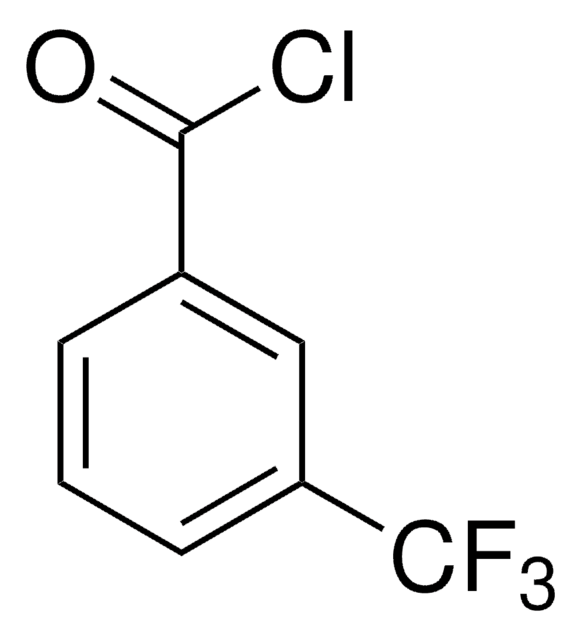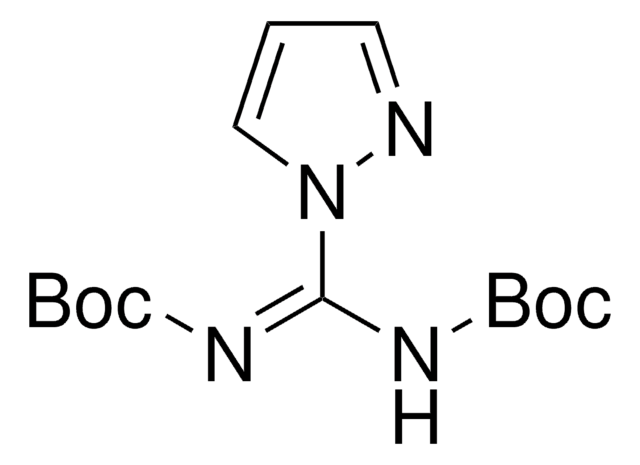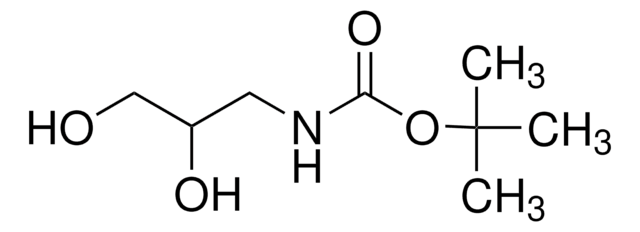458910
2-(Boc-amino)ethanethiol
97%
Synonym(s):
tert-Butyl N-(2-mercaptoethyl)carbamate
About This Item
Recommended Products
Quality Level
Assay
97%
reaction suitability
reagent type: cross-linking reagent
refractive index
n20/D 1.474 (lit.)
bp
68 °C/0.3 mmHg (lit.)
density
1.049 g/mL at 20 °C (lit.)
functional group
Boc
amine
thiol
SMILES string
SCCNC(OC(C)(C)C)=O
InChI
1S/C7H15NO2S/c1-7(2,3)10-6(9)8-4-5-11/h11H,4-5H2,1-3H3,(H,8,9)
InChI key
GSJJCZSHYJNRPN-UHFFFAOYSA-N
Looking for similar products? Visit Product Comparison Guide
General description
Application
Signal Word
Warning
Hazard Statements
Precautionary Statements
Hazard Classifications
Eye Irrit. 2 - Skin Irrit. 2 - STOT SE 3
Target Organs
Respiratory system
Storage Class Code
10 - Combustible liquids
WGK
WGK 3
Flash Point(F)
228.2 °F - closed cup
Flash Point(C)
109 °C - closed cup
Personal Protective Equipment
Choose from one of the most recent versions:
Already Own This Product?
Find documentation for the products that you have recently purchased in the Document Library.
Customers Also Viewed
Global Trade Item Number
| SKU | GTIN |
|---|---|
| 458910-25ML | 4061838127938 |
| 458910-5ML | 4061838127945 |
Our team of scientists has experience in all areas of research including Life Science, Material Science, Chemical Synthesis, Chromatography, Analytical and many others.
Contact Technical Service










